
15 Days Tibet-Xinjiang Overland Tour from Lhasa to Kashgar
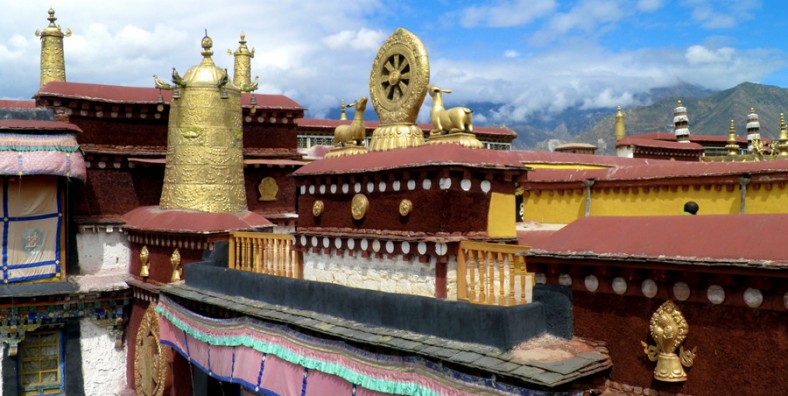
Tour Overview
15-day Tibet and Xinjiang overland tour starts from Lhasa, and ends in Kashgar. It takes you to drive cross the Tibet Plateau via the southern Tibet-Shigatse and the Mount Everest,...
Code of Tour: YCT0000004280
Length of Travel: 15 Day
Destinations of Tour: Lhasa-Gyantse-Shigatse-Sakya-Lhate-Saga-Baryang-Darchen-Mt.Kailash-Zanda-Ali-pangongtso-Dorma-Dahongliutan-Mazar-Yecheng-Kashgar
Departure City: Lhasa
Price of Tour: Request
Type of Tour:
Features of Tour: Photo Nature Hiking Culture Minority
15-day Tibet and Xinjiang overland tour starts from Lhasa, and ends in Kashgar. It takes you to drive cross the Tibet Plateau via the southern Tibet-Shigatse and the Mount Everest, and through the Ngari Area, visiting Mount Kailash, Lake Manasarovar and the ruins of Guge Kingdom. You will experience the spectacular landscape of the remote area of Tibet and Xinjiang, where less people appear but many wild animals live.
Highlights
- Climb the dazzling Gyantse Kumbum, a monumental chorten with mural-filled chapels.
- Marvel at the turquoise waters of Yamdrok-tso, one of Tibet’s most sacred lakes.
- Go down into the bowels of the Potala, the impressive but spiritless citadel of the Dalai Lamas.
- Join the shuffling, murmuring pilgrims around the shrines of the Jokhang, the spiritual heart of Tibet.
- Follow monks, mendicants and fellow pilgrims around the Barkhor, Lhasa’s fascinating medieval pilgrim circuit.
- Take in a prayer meeting or some monk debating at Sera and Drepung, two of the largest and most intact of Tibet’s great monasteries.
- Head to the start point of Xinjiang-Tibet highway, which was an important site along the ancient Silk Road.
- Drive along the most challenge highway from Lhasa, Tibet to Kashgar, Xinjiang.
Brief Itinerary
- Day 1: Lhasa Arrival
- Day 2: Lhasa
- Day 3: Lhasa
- Day 4: Move forward to Shigatse via Yamdro-tso lake and Shigatse
- Day 5: Drive to Sagar County
- Day 6: Move from Saga to Lake Manasarovar
- Day 7: Tour Manasarovar Lake, then to Darchen to prepare your trekking
- Day 8: Trek day one (Outer circuit), Darchen to Drirapuk 11km
- Day 9: Trek day two, Drirapuk to Dzultripuk 22km
- Day 10: Trek day three- Dzultripuk to Darchen-11km
- Day 11: Darchen to Zanda
- Day 12: Zanda to Pangong-tso Lake
- Day 13: Pangong-tso – Dorma – Dahongliutan
- Day 14: Dahongliutan to Yechen
- Day 15: Yechen to Karshgar
Google Map
Detailed Itinerary
Day 1 Arrive in Lhasa
Sightseeing and Activities:None
Accommodation:Lhasa
Meals:none
Arrive by flight or train to Lhasa. Upon arrival in the Lhasa Gongar airport or the Lhasa train station, you will be met by your tour guide and driven to Lhasa downtown. Then have a rest in Lhasa to acclimatize the high altitude.
Stay overnight in Lhasa
Day 2 Lhasa sightseeing
Sightseeing and Activities:Potala Palace and Johkang Temple
Accommodation:Lhasa
Meals:breakfast
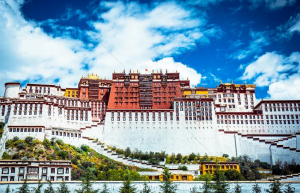
In the morning, you will go to the most splendid museum, the Potala Palace, and explore the grandest chapels of its kind and see the jeweled burial chorten of past Dalai Lamas as well as statuary, frescoes and paintings.
Later visit the Jokhang Temple, which is considered as the most sacred temple in Tibet, and draws tremendous number of pilgrims from all over Tibet each year for it houses a magnificent image of Sakyamuni at 12 years old.
Then stroll around Barkhor is a well-known pilgrimage circuit that encircles the Jokhang, and the Barkhor street itself also serves as the biggest bazaar in Lhasa, where you can find some handicrafts, ambers, jewelry, Tibetan clothes, ect.
Stay overnight in Lhasa.
Day 3 Lhasa
Sightseeing and Activities:Sera Monastery and Drepung Monastery
Accommodation:Lhasa
Meals:breakfast
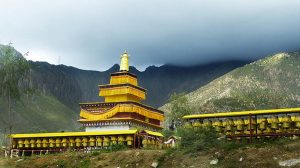
Today, you will explore Tibet’s two greatest monasteries, Drepung and Sera which once housed about 10,000 monks. Drepung Monastery is situated at the foothill of a mountain and was founded by Jamyang Choeje in 1416. The monastery is divided into two different colleges that are Drepung loselling and Drepung Gomang college. The Ganden podrang was famous among them as it is the government centre during fifth Dalai lama and later was moved to the famous Potala palace during fifth Dalai lama.
In the afternoon tourists explore the Sera Monastery which was founded in 1419 by Tsongkapa’s disciple Jamchen Choeje. The whole monastery is divided into two colleges and there are Sera ‘jhe’ and Sera ‘may’ respectively. Among them ‘Tsokhang chenmo’ where the monks from all the colleges assemble and pray together there. You can also see monks debating there in the courtyard at around 6-7:30 in the afternoon section. Note: if you don’t feel tired, you can try kora(circling around religious sites) Drepung and Sera monastery. Your tour guide and driver will drop you back to your hotel.
Day 4 Move forward to Shigatse via Yamdro-tso lake and Shigatse
Sightseeing and Activities:Mt. Kailash, Yamdroktso lake, Nanchan- Kangtsang glacier, Kubum Monastery
Accommodation:Shigatse
Meals:breakfast
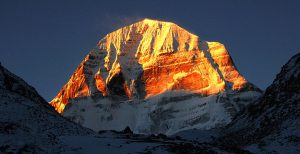
The first day we drive westwards to Mt. Kailash via Shigatse, the second biggest city in Tibet. On the way to Shigatse, we will pass kangpa-la with 4700m. From the top of the pass in clear weather, we can see the Yamdrotso lake in fabulous shade of deep turquoise. Just a few kilometers driving through the shore of lake Yamdroktso Lake reaches Nangartse county and is the largest town on the lake side.
Then we drive from yamdrok-tso to Gyantse city, and you have to cross the 4960m karo-la with its awesome roadside views of the Nanchan- Kangtsang Glacier. In Gyantse city, you will explore the Kubum Monastery which is the town’s foremost attraction. The 35m-high chorten(stupa) with its white layers trimmed with decorative stripes and its crown-like golden dome, is awe-inspiring. Finally drive back to Shigatse.
Stay overnight in Shigatse.
Day 5 Drive to Sagar County (450km)
Sightseeing and Activities:Drive to Sagar County (450km)
Accommodation:Sagar
Meals:breakfast
We can take western Tibet road from Shigatse to Sagar. Through it is quite a long driving, and the newly paved road can help us drive faster and safer.
Day 6 Move from Saga to Lake Manasarovar(500km)
Sightseeing and Activities:Lake Manasarovar
Accommodation: Tent
Meals:breakfast
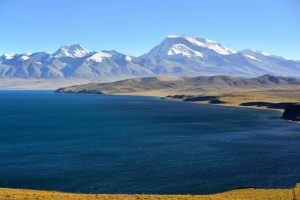
Then you are moving towards the Drongpa County, the region around the sources of Brahmaputra River, which is about 167km from the sagar town. Then you will reach the main road with a couple of basic guest houses, restaurants and a small monastery called “old Drongpa”. Around the monastery you can see a pile of yak heads which is carved with “sutras” and “mantras” like “OM MA NI PAD MEY HUM” which is mantra of god of compassion. And new Drongpa is a small town with a couple of shops, hotels and restaurant is about 25km apart from the old drongpa. Then head towards the Baryang with 4750m above sea level. Drive to Lake Manasarovar.
Camp by the lake
Day 7 Tour Manasarovar Lake, then to Darchen to prepare your trekking (30km)
Sightseeing and Activities:Manasarovar Lake
Accommodation:Darchen
Meals:breakfast
You can relax around the lake shore and experience the natural beauty of the lake. In the summer, flocks of swans will gather on the lake, bringing grace and life to the area. You can also see so many Tibetans and Hindus praying and religious circling around the lake shore for the whole day. You can see snow-capped mountains on the background and hundreds of swans gathering on the lake will attract hundreds of thousand tourists world-wide.
Stay overnight in Darchen.
Day 8 Trek day one (Outer circuit), Darchen to Drirapuk 11km
Sightseeing and Activities:trekking circuit around mount kailash
Accommodation:Drirapuk
Meals:breakfast, lunch
Traditionally, a pilgrim undertakes 52 km trekking circuit around mount kailash commencing at darchen(4574m) and crossing the Dolma-la pass on the second day of the three day walk. Darchen is the starting point and ending for the general circuit of the sacred mount. A few kilometers after leaving Darchen, there is a valley called “sarshung” where porters are waiting for their clients. They will help the client to take belongings on yaks and horses. After two hours, you came upon a grassy plain populated by nomads. There you can refresh yourself in nomadic tent by drinking some soft drinks there. There will be another two hours at least before reaching Drirapuk(4920m). You need to camp or can rest in monastery’s guest house made from cement with better facilities than others in Drirapuk. At the opposite side of Drirapuk, there you can see small monastery with its guest house little bit cleaner than others.
Camping
Day 9 Trek day two, Drirapuk to Dzultripuk 22km
Sightseeing and Activities:Trek day two, Drirapuk to Dzultripuk 22km
Accommodation:Dzultripuk
Meals:breakfast,lunch
Day two: The second day is the hardest and most tough circuit with the Dolma-la pass, which lies 6.4km ahead but 762m above Drirapuk. The peak of Dolma-la pass is about 5630m above sea level, so it is better to set off early in the morning as the sunshine lights ridges above. After taking a rest on the peak of Dolma-la pass, you will descend to Lhachu valley via staircase, which takes about one hour from the pass. From here there is another four-hour trekking to today’s final destination with no shelters in between. It is better to walk on the right side of the river and finally reach Dzultripuk(miracle cave of milarepa). Tourists are advised to get there before other groups’ arrival because the number of rooms available is so limited there in Dzultripuk. Take a good rest in the guest room and prepare for next morning’s departure.
Camping
Day 10 Trek day three- Dzultripuk to Darchen-11km
Sightseeing and Activities:Trek day three- Dzultripuk to Darchen-11km
Accommodation:Darchen
Meals:breakfast,lunch
The tour guide will arrange you to visit the caves, the temple and shrines that have been built around Milarepa’s cave. The walk back to Darchen is easy and the exit from the valley can be reached within three hours. At the ending point of the valley, the driver will come to pick you and take you back to Darchen.
Stay overnight in Darchen
Day 11 Darchen to Zanda, visit Guge Kingdom and Torling Monastery
Sightseeing and Activities:Darchen to Zanda, visit Guge Kingdom and Torling Monastery
Accommodation:Zanda
Meals:breakfast
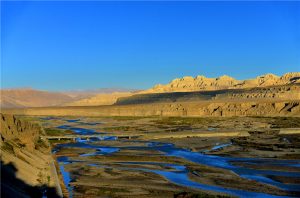
It is about an eight-hour drive from Darchen to Zanda, though the distance is only about 243km from Darchen. After several hours of zigzagging down and up fantastically eroded gorges and gullies, we enter wider Sutlej Valley and after crossing a bridge, finally reaches Zanda. Tsamda County is the current name for the region and is known as Guge kingdom. And the county capital is located at Toling. Toling monastery, founded by Richen zangpo in the 10th century, was once Ngari’s most important monastic complex. It was due to the influence of Richen Zangpo that Toling became the main religious centre of Guge kingdom after inviting the great Indian master ATISHA. The kings of GUGE replaced the city as a political centre of power by establishing capital slightly closer to the Indo-Tibetan trade routes. But the monastery is still the important cultural heritage of Ngari.
Stay overnight in Zanda.
Day 12 Zanda to Pangong-tso Lake, 395km driving
Sightseeing and Activities:Zanda to Pangong-tso Lake, 395km driving
Accommodation:Pangong-tso Lake
Meals:breakfast,lunch
Experience various landscapes on the way to Ali, the capital of Ngari prefecture which provides an excellent place for meditation. Indus river drives from mount Kailash and flows through this region and finally towards into Pakistan. It is a modern city with central administration, business and shopping district. Then we continue to Pangongtso Lake where you can visit the mysterious lake pangongtso of which the one part of lake is inside Tibetan area and other part is situated inside Indian Territory.
Camp by the Lake Shore.
Day 13 Pangong-tso – Dorma – Dahongliutan, 433km driving, Tialongtan-la pass more than 5000m
Sightseeing and Activities: Pangong-tso – Dorma – Dahongliutan, 433km driving, Tialongtan-la pass more than 5000m
Accommodation:Dahongliutan
Meals:breakfast, lunch
The road condition is very bad as we move far towards north and on the way to Dolma, the road condition becomes more difficult after leaving dolma. Soon we will reach a pass called Tialongtan-la pass with more than 5000m above the sea level. After than its still 7-8 hours way to reach Dahongliutan.
Stay overnight in Guest House.
Day 14 Dahongliutan to Yechen, 499km, Kunlun and Karakorum mountain range
Sightseeing and Activities: Dahongliutan to Yecheng, 499km, Kunlun and Karakorum mountain range
Accommodation:Yechen
Meals:breakfast, lunch
You need to drive 499km to reach Yechen from Dahongliutan, but the journey duration depends upon the climate and road condition. Then you will enjoy beautiful Kunlun Mountain ranges on the right side, and the Karakorum Mountain range on the left side (more close to Indian border). The trip soon begins as we pass by Mazar across the Kunlun mountain range. The chiragsaldi is the last pass that you need to cross and steep down towards the Yecheng ravine to Xingjiang. Yecheng is situated at the edge of the Taklamakan , a city with a pretty Bazaar inhabitated by Uigur and Han Chinese.
Spend overnight in hotel.
Day 15 Yechen to Karshgar, visit the edge of Taklamakan Desert
Sightseeing and Activities:Yechen to karshgar, visit the edge of Taklamakan Desert
Accommodation:Karshgar
Meals:breakfast, lunch
Kashgar is about 250km from the Yecheng and is the largest oasis in the whole China. The road condition is very smooth with black tar road that runs through the edge of Taklamakan desert. The scenery is very excellent with grey-black rocks and sand dunes composing the major features of the landscape of Taklamakan. The most interesting thing is that you should not miss the Sunday market, one of the largest weekly markets of Asia, as you reach there on Sunday. Especially in the morning you can see the highway, crowded with full-load donkey trucks carrying vegetable, fruits vendors, children and women.
End tour at Kashgar.
Recommended Hotels
| City | 5 Star | 4 Star | 3 Star |
|---|---|---|---|
| Lhasa | Intercontinental Hotel | Lhasa Yak Hotel | Lhasa Xiongbala Hotel |
| Shigatse | / | Shigatse Manasarovar Hotel | Jiumu Yamei Hotel in Shigatse |
| Sagar County | / | Xibu Yizhan Hotel | Brahmaputra Hotel |
| Darchen | / | / | Darchen New Hotel |
| Zanda | / | / | Yadu Hotel |
| Dahongliutan | / | / | Dahongliutan Guesthouse |
| Yechen | / | Shiliu Boutique Smart Hotel | Delong Boutique Hotel |
| Karshgar | Radisson Blu Hotel Kashgar | Luxemon Qinibagh Hotel | Xinjiang Nurlan Hotel |
Quotations
| Group size(person) | 5 Star ($) | 4 Star ($) | 3 Star ($) |
|---|
Service Included:
-
Tibet travel permit and all other necessary permits to Tibet;
-
All entrance ticket fees for all tourist sites listed in the itinerary;
-
Personal knowledgeable English-speaking Tibetan local tour guide;
-
Personal comfortable, clean and safe vehicle with reliable Tibetan local driver; vehicle ranging from 4WD land cruiser to minibus depending on your group size;
-
All lodging listed in the itinerary; it’s your decision about the accommodation class: luxury 5-star international hotel, comfortable 4-star hotel, economic 3-star hotel or budget hostel, guesthouse or tent. Please tell us your accommodation preference when submitting the enquiry; we will arrange the best-value hotels for you.
-
Domestic flight/train tickets listed in the itinerary;
-
All meals listed in the above itinerary.
Service Excluded:
-
International flight to and out of China;
-
Chinese visa (Note: we could help you with the Chinese visa application, like providing the invitation letter, presenting the hotel or domestic flight reservation copies, etc that you may need. )
-
Domestic flight/train not listed in the itinerary. (We can provide you the domestic flight/train ticket booking service at the BEST discount price; please contact us our travel experts for the details.)
-
Meals not specified in the itinerary; usually it costs about USD3-15 per person for one meal in TAR (Tibet Autonomous Region).
-
Tips and gratitude to tour guide and driver;
-
Personal expenses, like laundry, phone call, snacks, soft drinks (please do the best to avoid the alcoholic beverages during your Tibet trip), optional tour activities, etc.
Travel Tips:
- Tibet Permits
There are several permits required to visit Tibet. Tibet Entry Permit, issued by Tibet Tourism Bureau, is the most important one which has to be obtained before your trip because you must have it to take your flight/train to Tibet. To get the permit, you have to book a Tibet tour with us, and send us your passport and Chinese visa about 20 days in advance, and then let us apply for the permit (all Tibet permits can only be applied by travel agency). If you travel to other prefectures like Shigatse, Nyingchi, Shannan, etc, you also have to obtain an Alien Travel Permit. If you travel to Mount Everest, you have to obtain a Border Permit. (Tibet Discovery, with office in Lhasa, has always kept up with the latest news on Tibet Permits. Traveling with us, all your permits are guaranteed as long as you are qualified to the requirements.)
- Available Months to Visit Tibet
Generally speaking, May to early October is the best time to for a Mount Kailash trip. July and August are the peak season and rainy season. It may be too cold to travel in Kailash area from November to March. There is usually heavy snow. The conditions in Namtso Lake and Mount Everest area are quite similar with Kailash. While other places like Lhasa, Gyantse and Shigatse are suitable for travel all year around.
- High Altitude Sickness
The average altitude of Tibet is about 4000 meters above the sea level (Lhasa: 3700m; EBC: 5200m; Namtso: 4718m). You may suffer a bit from High Altitude Sickness in the beginning days of your Tibet trip if you haven’t had rich high plateau travel experience. But don’t worry too much, the high altitude can be acclimatized usually in 2~3 days. Our suggestion is to take a physical examination and get suggestions from your doctor, and also bring some medicines to prevent from High Altitude Sickness before your trip. While in Tibet, you should keep warm all the time, avoid strenuous activities, drink more water and eat more vegetables and carbohydrates. You’d better not take showers during the first two days after your arrival at Tibet. If you don’t feel well, get help from your tour guide or go to the hospital without any delay.
- How to Go to Tibet
Basically you have two options – flight and train. Currently, you can take a flight to Lhasa from Beijing(4.5hrs), Xian(3.7hrs), Chengdu(2.5hrs), Chongqing(3hrs), Kuming(3hrs), etc. Among all these cities, Chengdu and Xian have more frequent flights to Lhasa. Kathmandu also has several flights to Lhasa each week.
If you a train travel, you can take a train to from Beijing(40.5hrs), Xian(32hrs), Chengdu(43hrs), Shanghai(47hrs), Chongqing(42hrs), Lanzhou(25hrs), Xining(22hrs), Guangzhou(54hrs).
- Packing and Wearing Ideas
Firstly you can’t forget your passport and Chinese Visa. A large backpack and a smaller one are recommended (the smaller one can be used for daily activities). Also bring the necessary medicine you need. Other stuffs like sunglasses, snow glasses, hats, lip balm, sun block are recommended. As for wearing, you are suggested to dress in layers (both thin and thick jackets). Down jacket is necessary in Spring and Autumn. A pair of durable and comfortable shoes is necessary.














